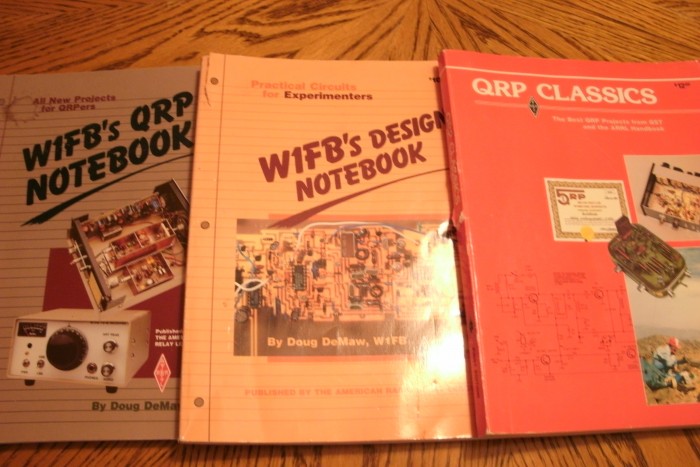[Today’s run: 1.5 miles with wife and dog (run/walk)]
I am not an electronics expert. I did not study electrical engineering in college and I have never worked a job where such knowledge was required. So a lot of my self-education in electronics has come by reading books, web pages, magazines, and studying various circuits and projects either in schematic or constructed form.
I have a pretty good library of electronics books. There are a few classics which I would still like to obtain, but I have plenty enough to learn and a good variety of sources to learn from.
QRP is a morse code shorthand which means “low power”. It used to be a suggestion for action: please lower your power. But now it covers a whole area of amateur radio interests focused around lower power operation including the design and construction of unique radios. Morse code operation is uniquely suited for this type of equipment; all that is needed is a steady RF signal and way to turn it on and off (or detect it).
Here’s a picture of three books that I have picked up over the years:
QRP Classics is an anthology of small-radio construction projects and articles gathered from ARRL publications in the 1970s – 1980s.
W1FB’s Design Notebook is a collection of ideas, rules of thumb, circuit pieces, etc.
W1FB’s QRP Notebook covers some of the same ground.
I think all of these came out around 1990.
W1FB was Doug DeMaw, a technical expert at the ARRL and prolific author. He also was the co-author of a book which I would like to eventually acquire: Solid State Design for the Radio Amateur.
The three in this picture are pretty easy to find. SSDRA is not easy to find. The modern replacement for SSDRA is Expermental Methods in RF Design, which I have, and is still in print from the ARRL.
